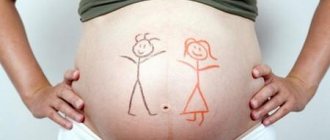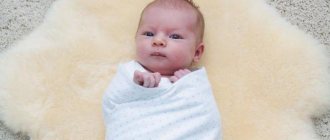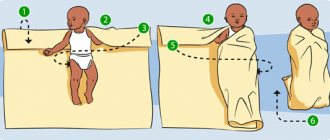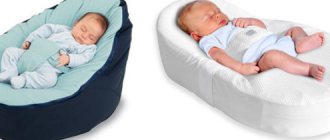Let's remember our childhood. Surely everyone has photographs of the baby lying in a tightly tied diaper cocoon. Since ancient times, it was believed that fabric is one of the most effective ways to calm a newborn. In addition, the diaper securely fixes the limbs so that the baby sleeps peacefully and does not injure himself.
But the baby is growing and parents begin to understand that the baby should be given free rein, free his arms and legs in order to learn to sleep like an adult. How to transition smoothly and stress-free from fabric to regular sleep? This is what we will find out in this article.
Free swaddling
When your baby sleeps alone in the crib, he can easily wake himself up or scratch himself by raising his hand or foot. A small child does not yet feel the boundaries of his body and does not realize that this arm or leg belongs to him. Therefore, even touching or jerking your own hand can wake up the baby or cause anxiety.
That's why a diaper comes to the rescue. The fabric is straightened out on a flat surface, the baby is laid down and wrapped first with one side of the diaper, then with the other, practically without pulling the diaper. At the same time, the head remains outside, the baby can turn it. Free swaddling means that the baby can move his arms and legs, can bring his hand to his face, and tuck his legs towards his stomach. But thanks to the presence of a diaper, it will no longer be possible to do this chaotically. The older he gets, the better he controls his body movements.
Usually, by the second or third month of life, swaddling is no longer required, but sometimes up to six months there remains a need for loose swaddling during sleep.
Weaning a baby off diapers: basic recommendations
Some parents, in an attempt to wean their baby from diapers, begin to put him with them for a period of rest. This situation leads to the fact that the baby sleeps well with his mother, but in the future it can be very difficult to wean him from sleeping together. The fact is that when spending time together, the emotional connection between the child and mother begins to strengthen. The baby feels calmer, and the parent does not need to get up once again to cover the baby or check his condition. Over time, the child grows up and all attempts to put him to sleep in a crib separately often end in screams, hysterics and emotional distress. In this regard, it is necessary to resort to this practice carefully and only in extreme cases, otherwise you can get much more problems.
For a painless refusal of diapers, it is recommended to adhere to the following recommendations:
- Make a gradual transition from the technique of tight swaddling to loose swaddling; if the baby refuses to fall asleep without diapers, then you can loosen the hold at the moment of sound sleep, when the baby stops worrying, his breathing normalizes and he stops reacting to extraneous stimuli;
- Make the diaper looser every day, the baby will get used to the absence of restrictions and over time will begin to sleep peacefully, while the smooth transition from strong fixation to weak swaddling will be imperceptible to him;
- By 3 months, you should stop using swaddling during the day, which will allow the baby to get used to hand movements, he will stop feeling scared and begin to develop the ability to control his limbs;
- When laying him down, hold the baby tightly to you, and after he falls asleep, carefully transfer him to the crib, and then simply cover him with a sheet or light blanket;
- When rocking in a crib, cover your baby with a thin blanket, which will give the baby a feeling of security and he will be able to fall asleep in a calm environment without experiencing unnecessary worries.
Each baby’s behavior is individual, so it’s worth understanding what makes your baby sleep more peacefully in diapers. Some children get in the way of their hands, others are afraid of their feet. Taking into account this feature, swaddling can be performed in different ways. Some parents fix only the lower limbs and remove the object that limits movement after the child falls asleep soundly. At the moment of waking up, the baby in most cases begins to cry and at this time you should not immediately pick him up, try to talk to him and calm him down. It’s worth waiting a little and not rushing, as most likely he will “go” into a deep sleep again. During the period of weaning a child from diapers, it is recommended to use special mittens to prevent injuries and scratches, which are made from child-safe materials and are well fixed on the baby’s fist.
Weaning a child off diapers should occur gradually, without sudden transitions and worries on the part of the parents. The success of the process depends on the patience and diligence of the parents, so you should carefully monitor the baby and feel his emotions, condition and understand the reasons for his anxiety. The care and attention of loving people is the main guarantor of the baby’s comfort and his sense of security.
Tight swaddling
Even forty to fifty years ago it was customary to wrap a baby tightly in diapers. In general, the process is similar to loose swaddling, but tight swaddling usually uses thicker fabric and is pulled tighter when wrapping the baby. It was believed that it would help fight hip dysplasia, that legs would be straight, that posture would be better, and that babies swaddled this way would sleep better. However, studies have shown that tight swaddling not only does not help fight dysplasia, but can also provoke hip dislocation and SIDS (sudden infant death syndrome). Children, even tightly tied, may roll over on their side or stomach, and will not be able to support their face with their hand. In addition, you can accidentally tighten the chest, and the baby will have difficulty breathing.
In addition, it is very important for a child to develop tactilely, so that his hands and feet bump into safe objects - a diaper can perform this function. If the baby spends a lot of time in a tight position, he does not have the opportunity to explore his own body and the space around him. Regular tight swaddling can provoke a very violent reaction when the baby is left free.
Changing materials
The diaper should be:
• made of natural material: for example, muslin fabric absorbs water well and allows air to pass through, it is not too thin due to a special fleece, so the baby is not cold in it (this does not create a greenhouse effect, reducing the likelihood of diaper rash in the child);
• soft to the touch and without rough seams, appliques and decorations, so as not to rub sensitive baby skin;
• saves heat and corresponds to the air temperature indoors or outdoors, so that the child does not overheat or become hypothermic;
• high-quality and durable to withstand a large number of washes at high temperatures.
In addition to the usual quadrangular diapers, changing envelopes and bags are now produced.
It is convenient to use special tables for changing. There are models that are combined with a baby bath, which simplifies evening routines. It is very convenient when there is a shelf or tray for children's cosmetics and wipes - this way everything is at hand, and the child cannot accidentally brush the tubes off the table. If you choose a chest of drawers combined with a changing table, you need to place a mattress so that the baby is not too soft or hard. Some cribs allow you to place a changing table directly on the frame.
Pros and cons of swaddling
pros
:
• swaddling soothes and makes it easier for the baby to fall asleep, since the mother’s womb is cramped and the baby gets used to the limited space that it is deprived of at birth;
• swaddling allows you to warm the baby, essentially replacing one layer of clothing, and helps out low-birth-weight and premature babies whose thermoregulation does not work well;
• you can save on baby clothes, which have to be washed very often in the first months of life;
• diapers are easier to wash and often dry faster than baby clothes;
• in the hot season, you can give your baby air baths without a diaper, covering him loosely with a cotton diaper.
Minuses
:
• can provoke SIDS, so a swaddled baby should be monitored;
• when wrapped loosely, the child may free himself from the diaper, accidentally throw it over his face and get scared;
• tight swaddling can lead to hip dislocation or asphyxia;
• Some babies object to restrictions on their movements and may find swaddling annoying.
When is it time to stop swaddling?
When the baby stops involuntarily throwing up his arms and legs, you can wean the baby off swaddling. Often, parents need to use a diaper to calm the baby - in this case, they are advised not to set clear time limits for themselves, but to focus on the child’s needs and behavior. Pay attention to how quickly and soundly the baby falls asleep in a diaper and without it, groans or worries. It is not at all necessary to suddenly give up the diaper - you can begin the process of gradually weaning your baby from swaddling.
But if a child spends too much time in a swaddled state, he misses many opportunities to get acquainted with the things around him, and also takes longer to learn to control his own body.
When should you wean yourself off swaddling?
When and how to wean your baby off swaddling before bed? So, let's agree that in the first 3-4 months of life, the child still needs to sleep in a constrained position so as not to disturb himself during sleep. And after the first three months of life, you can begin to gradually abandon diapers.
Also, you need to look individually at the achievements of your little one. If at this time the baby begins to independently roll over onto his tummy and side, this means that he is ready to give up swaddling.
Further, everything remains in your hands, since this is the safety of your little one. However, it is categorically not recommended to leave the fabric on the baby already in the sixth month of life, since the baby will get used to the fact that he sleeps with his limbs tied. If you abruptly discontinue tissue at an older age, he will experience real panic and discomfort. Do you need it? We think it's not necessary.
Ways to wean your baby off swaddling
• Over time, stop swaddling your baby while he's awake. Give him the freedom to explore toys, the sides of the bed, your face, and touch your legs with your hands. Leave swaddling only for sleep, and eventually - exclusively at night. Take your time to wean your children off quickly, otherwise they may become fussy and restless. Once you are able to get rid of swaddling during the day, focus on weaning your baby off swaddling before bedtime.
• Loosen the swaddling gradually. Try to wrap the baby looser each time, and then completely replace the diaper with a light blanket. Wrap your baby in a blanket without tucking in the free edges. The child will move his arms and legs, freeing up more and more space for himself, and he will not be irritated by stiffness of movements.
• Put your baby to sleep in a diaper, and when he falls asleep, remove it. Let him gradually learn to sleep without a diaper. If the baby gets worried and wakes up, you can wrap him up again.
• Use special anti-scratch mittens if you are worried that your child might hurt himself by flapping his hands.
• Dress your baby warmly enough at night. Doctors agree that the air in the bedroom should be cool. If your child is dressed in comfortable pajamas, this will make his sleep longer and more restful.
• Don't neglect rocking in your arms. This gives a feeling of peace and security.
• If you are up for it and are a light sleeper, you can practice co-sleeping. The child will feel calmer next to you and will fall asleep faster. You can use cocoons for sleeping. In addition to the fact that they provide the baby with a feeling of enclosed space, their shape is designed to prevent curvature of the baby’s skull and repeats the baby’s position in the womb.
• Replace the diaper with a baby sleeping bag. You can unfasten it from night to night and gradually teach your baby to sleep under the blanket.
• Try incorporating rituals by observing what calms your baby: a bath, a specific lullaby, white noise, or rocking in the crib.
What should you do if your baby has a very difficult time weaning himself or refuses to sleep without a diaper? You can contact your pediatrician or child sleep specialist for recommendations, ask moms you know to share their experiences and support you.
Behave gently but persistently, because if you stop trying to wean your baby from sleeping wrapped, it will be impossible to do without swaddling for some time.
Why do you need to swaddle your baby?
If you are wondering how to wean your baby from swaddling, then your baby is probably already grown up. Why did your child need the fabric anyway?
So, they wrap the little one in a swaddle, first of all, so that he can go through the adaptation period from the mother’s womb to the big life with dignity. There he felt cramped, cozy, surrounded by comfort and a calm atmosphere.
Since ancient times, people have found the benefits of tight swaddling. It was believed that if you swaddle a baby in the first years of his life, wrapping him up with his arms and legs while he sleeps, the baby will sleep more soundly and will not wake himself up.
Pediatricians also agree with this, although they offer more humane methods in the form of a sleeping bag. Pediatricians believe that you can swaddle a baby until the fourth month of life, and then give free rein to movement.
The baby's vestibular processes are still disturbed, he jerks his legs and arms at random, and in his sleep he may well scare himself or wake him up. Often this is exactly what happens: the baby wakes up, cries, and can no longer sleep. This condition also sometimes negatively affects the nervous system. Swaddling is useful in the first month and a half of life and will allow the baby to prolong the feeling of comfort and warmth.
Also, the baby has a certain Moro reflex, which is inherent in him from birth. This information may be shocking to you, but don't be nervous. During the first few months of life, your beloved baby may suddenly throw up its arms and legs, moreover, unconsciously. And these movements, which are beyond the child’s control, can greatly frighten him.
Children wake up crying and generally begin to be afraid of sleep. In the first days of life, the baby has no control over his body at all, and therefore, while in diapers, he can easily scratch himself with his nails.
There are a few more nuances that relate to heat.
- Swaddling is necessary in order to maintain normal body temperature of the newborn. The fact is that very young children have disrupted thermoregulation processes. Therefore, if a little one is left simply without shelter and a diaper, he can easily freeze. But this can be easily avoided by taking a cloth and making a loose swaddling.
- It’s rare that a baby in a diaper can prohibit.
- Also, if the baby suffers from diaper rash, then you can use cotton fabrics. They help get rid of negative skin manifestations.
- Finally, after bathing the little one, it is necessary to wrap him in a cloth so that he feels comfortable after an incomprehensible procedure.
Also, there are some disadvantages of swaddling that young mothers have not yet learned.
- If the diaper is tight and dense, it can overheat the baby's body, thereby causing diaper rash and other diseases.
- Tight swaddling can hinder the baby's movement and also affect his physical and psychological development.
- If you do not change the fabric in time, skin diseases and diaper rash will appear.
- By swaddling your baby for too long, you force him to stay in one position without moving.










